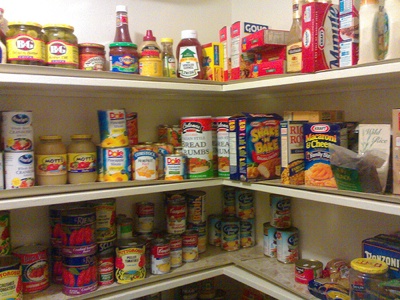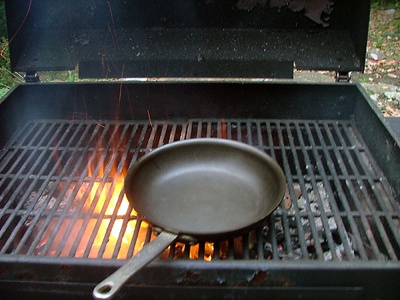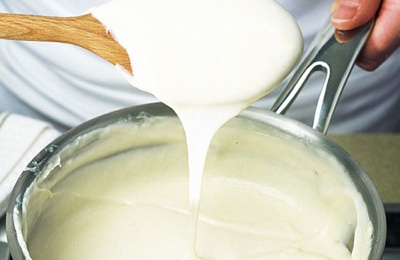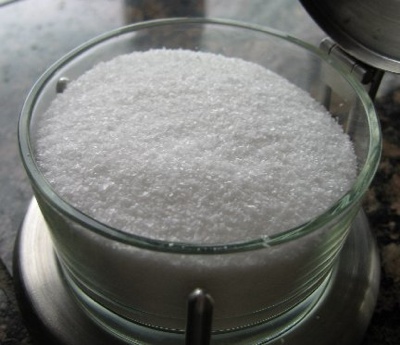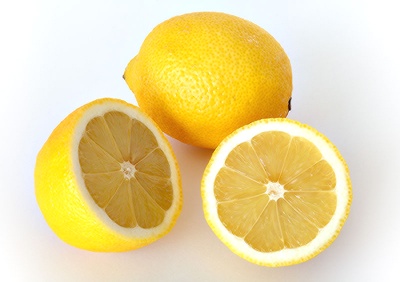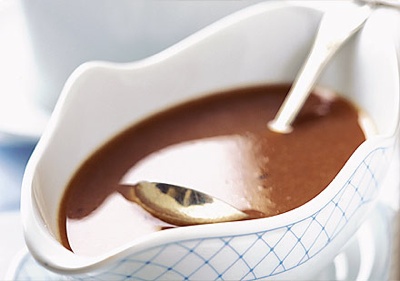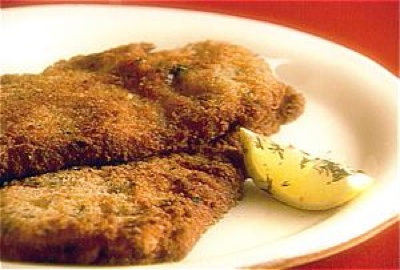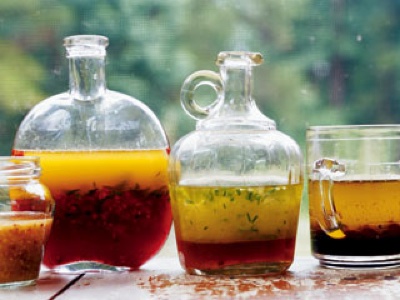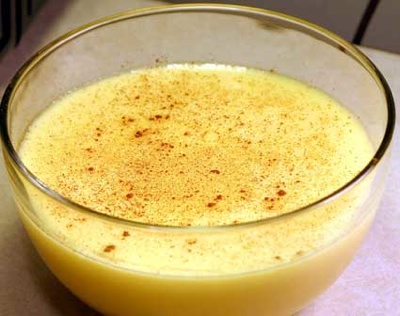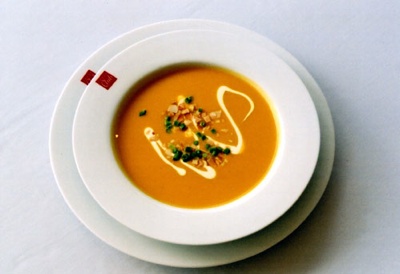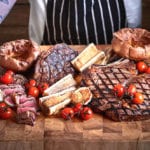 Music
Music  Music
Music  History
History 10 Less Than Jolly Events That Occurred on December 25
 Weird Stuff
Weird Stuff 10 Funny Ways That Researchers Overthink Christmas
 Politics
Politics 10 Political Scandals That Sent Crowds Into the Streets
 Weird Stuff
Weird Stuff Ten Bizarre Facts About The Doge Meme
 Our World
Our World 10 Ways Your Christmas Tree Is More Lit Than You Think
 Movies and TV
Movies and TV The 10 Coolest Stars to Set Sail on The Love Boat
 History
History 10 Things You Didn’t Know About the American National Anthem
 Technology
Technology Top 10 Everyday Tech Buzzwords That Hide a Darker Past
 Humans
Humans 10 Everyday Human Behaviors That Are Actually Survival Instincts
 Music
Music 10 Surprising Origin Stories of Your Favorite Holiday Songs
 History
History 10 Less Than Jolly Events That Occurred on December 25
 Weird Stuff
Weird Stuff 10 Funny Ways That Researchers Overthink Christmas
Who's Behind Listverse?

Jamie Frater
Head Editor
Jamie founded Listverse due to an insatiable desire to share fascinating, obscure, and bizarre facts. He has been a guest speaker on numerous national radio and television stations and is a five time published author.
More About Us Politics
Politics 10 Political Scandals That Sent Crowds Into the Streets
 Weird Stuff
Weird Stuff Ten Bizarre Facts About The Doge Meme
 Our World
Our World 10 Ways Your Christmas Tree Is More Lit Than You Think
 Movies and TV
Movies and TV The 10 Coolest Stars to Set Sail on The Love Boat
 History
History 10 Things You Didn’t Know About the American National Anthem
 Technology
Technology Top 10 Everyday Tech Buzzwords That Hide a Darker Past
 Humans
Humans 10 Everyday Human Behaviors That Are Actually Survival Instincts
Top 10 Tips for Great Home-cooking
Both my Grandmother and my mom were / are good cooks, so I come from good stock and picked up quite a few skills from the get-go. As a young woman I sold restaurant equipment and therefore knew many chefs and got lots of tips… then my younger sister went and married a traditionally trained french chef, it just got better and better. So, this is my top 10 tips to make your home-cooking really special.
10. Shop like Your Grandma
My Grandma’s cupboards were always full to overflowing, and they smelled good; of cinnamon and cloves and a myriad of other spices. Lots and lots of food, and you know what? No boil n’ bag, No Noodles n’ Sauce, No Canned Ravioli. My Grandma, and for that matter my Mom, bought stuff to make food preparation easier, not prepared food. Shop the prepared foods, just don’t buy them; use them for inspiration. I’ve modified the “Larder List” but not much, I buy low salt varieties when available and I avoid trans fats. I’m not going to bother listing staples; flour, sugar, oil etc. but here’s a good start:
Canned Tomatoes – diced or whole
Tomato Paste
Canned basic tomato sauce (not spaghetti sauce)
Cream Soups like Mushroom, Chicken, and of course Tomato
Lipton Dry Onion Soup Mix
Beef Stock
Chicken Stock
Worcestershire Sauce
Soya Sauce (dark)
Ketchup
Mustard (Grainy and regular)
Vinegar (I keep white and red wine and balsamic, but you can make do with white)
Wine – red preferably but white works, and buy the kind you can drink
Spices – All the normal ones plus 1 decent seasoning salt (I like Hy’s but don’t buy Lawry’s; it tastes as if it has sugar in it, and buy the NO msg kind – just in case), Dry Mustard, Mrs. Dash or other veggie based salt substitute, lemons and basil pesto in the fridge.
See recipe 1 and recipe 2 on the recipes page.
9. Brown The Meat or The Hotter the Better
Meat must be browned properly in order to have flavor, the natural sugars caramelize and make that nice brown crunchy tastiness. I love my steak rare, but it better be dark brown on the outside! The pan must be hot, like really hot, like bouncing water hot. Don’t worry; Hot pan – Cold Oil – Food Won’t Stick (thanks to Jeff Smith, The Frugal Gourmet). All cuts of meat, even if you’re going to stew it, benefit from this treatment. Don’t crowd the pan or the meat will foam up and boil. Grey meat is yucky. Don’t stir or flip the meat until you lift a corner and see the dark brown goodness.
Whatever you do invest in a pan that can take the heat…or be prepared to replace the cheap one every year or two as the bottom will warp.
See recipe 3 on the recipes page.
8. Remember The Golden Ratio
No, not the one that makes Nautilus Shells, this one…2 tablespoons fat, 2 tablespoons flour, 1 cup milk. This is a basic white sauce recipe. Remember this and you can make oh so many wonderful things. This same technique is used for gravy, cream soups, and of course cheese sauce.
See recipe 4 and recipe 5 on the recipes page.
7. How To Season Properly or Gee Whiz Watch the Salt
None of the first four recipes called for salt. Not because I’m a salt phobic but because the recipes use commercially prepared bases; either soup or stock. They are salty enough on their own (even the reduced salt varieties). Same thing with the cheese sauce, cheese is salty. Anything with soy sauce, and don’t forget margarine and butter, they both contain salt. If you go to the trouble (c’mon you won’t) to make your own soup stock you will need to add some.
Dried spices benefit from crushing and toasting. Crush ‘em a bit in the palm of your hand, and sauté ‘em for the last couple of minutes before you add the liquid to soups, stews, or casseroles. Take it easy on the spices. I saw a recipe that called for 1/4 cup of basil pesto for pasta that served 4 people. You may as well chug Aqua Velva, it’d have about the same level of aromatics. Go easy at first, you can always add more.
See recipe 6 on the recipes page.
6. Balance, Balance, Balance
Jamie talked about the five flavors in his food list; sweet, sour, salty, bitter and earthy (he knows the correct word; I just call it dirt flavor, raw mushrooms and soy both have it). I’m only concerned with the sour. Acid is missed so frequently. Stew that’s too beefy tasting, desserts that are sickly sweet, soup that tastes flat; all are missing acid. Try making the stroganoff recipe without the tomato paste, it just doesn’t taste right. There’s little or no tomato flavor, but the acid counteracts the richness of the beef stock, browned steak, and mushrooms. The sour cream does this to a certain extent but because of the richness of it, it’s not enough.
See recipe 7 on the recipes page.
5. Throw out The Cornstarch or How To Make Proper Gravy
Gravy should not be see-through, nor should it plop and jiggle on top of your meat. It should be velvety, meaty, and not too thick. You’ve already learned the basics with the white sauce, so figure out how much gravy you want to end up with and you’re going to use roughly 1/4 to 1/2 the proportion of flour.
Cook the meat and don’t forget #2, good quality beef can be dry roasted on high heat so it browns itself, otherwise brown it first. Take the cooked meat out of the pan, put it on a plate and wrap it with saran wrap, don’t be stingy, lots of saran wrap and then a towel. It’ll stay hot and juicy. Put the roast pan on top of the burner or use 2 if your roast pan is big enough. Add or remove fat as required, but leave all the chunky bits in the pan. Generally the only time you will need to remove fat is with cheap pork (which tastes way better than loin), and poultry. Turn the burners on high or med-high if you have gas. Throw a handful of fine sliced onion into the fat, cook it for a minute or two and then throw in the flour. You want to really brown the flour, so you just keep moving it around with the spatula, its going to stick, don’t worry about it, just keep scraping it up till it gets really brown. Now it’s really hot and smoking, sticking to the spatula and the pan, and you are starting to panic, pour in a good slosh of red wine and a couple or three of cups of beef stock. Whisk it until it comes to the boil, turn it down to medium and let it cook down a bit….Voila perfect gravy. You can take the hand mixer to it, but I don’t usually bother. If you don’t have any wine you can skip it, but do add a little vinegar or lemon juice.
For poultry gravy I don’t usually use wine, just stock, but add a little bit of beef stock to your poultry gravy. It improves it immensely. You can substitute or add fine diced mushrooms with the onions for mushroom gravy. I make this without the drippings, just oil, flour, onions, red wine, and stock to have with pork chops. I kid you not, quicker than gravy in the package.
4. Make a Breading that doesn’t stick to the pan
Thanks to the brother-in-law for this one, I tried for years and failed. Good thing I pay attention.
There are a few secrets to good breading, I will divulge them all.
You need 2 pans and a bowl, square cake pans work best because they have steep sides. Pan 1 is plain flour. The bowl in space 2 is either beaten egg whites or whole eggs. Egg whites work marginally better, but unless I’m going to make custard, I use whole eggs. Pan 2 is the breading; dry bread crumbs, seasoning (try a packet of chicken Bovril and a teaspoon of lemon-pepper for fish, I like seasoning salt, salt, and lots of pepper for pork.), and the secret ingredient, a handful of Parmesan cheese. In this instance be liberal with the seasoning. The flavor is all on the outside, and you want the taste to last the entire chew. The parmesan adds little or no flavor, other than a bit of salt, but the texture is improved immeasurably. Dredge the meat/fish in the flour, pat off the excess. Dip the meat in the egg mixture; use the side of the bowl to scrape off any excess. Plop the meat into the crumbs, use a spoon and mound the crumbs over it. Pat firmly. Flip it over and do it again. Now for the real important part; put them uncovered, in a single layer, in the fridge for an hour or so. The egg evaporates and you have a crust before you even cook it. Either pan fry in a mix of a little oil and butter, or olive oil, or alternately spray with Pam© and bake. Baking works well with stuffed chicken, no cheese leaking out everywhere, but it tends to get a little gooey on the bottom. Just scrape it off; that’s the side that’s on the plate.
3. How to Make Salad Dressing / Marinade
Good salad dressing requires the correct proportions; 1 part acid, 1 part water, 1 part oil. I make it in an old relish jar, but a bowl and a whisk works just as well. This is our family favorite; it works wonderfully on Greek Salad or as a marinade for chicken. Add a little extra salt and garlic for marinade. Mince 2 or 3 cloves of garlic, 1 tablespoon of onion, a good forkful of grainy mustard, a shake of Mrs. Dash, a grind or 2 of pepper, and 1/2 teaspoon of salt. Squeeze a lemon over the seasoning. Lemons where I live are never fresh and juicy, they are extra tart, so I have to double the juice with water to get 1 part acid. Add the correct amount of water and good quality light-tasting (if you like the yucky green flavor of extra-virgin, go ahead) olive oil. Shake or whisk like mad, let it sit for an hour on the counter to blend flavors.
An excellent way to cook fish, skip the water, add a bunch of chopped tomato to the mix, pour over dense fish and bake…mmmmm
Balsamic dressing; sub the vinegar, omit the Mrs. Dash and the mustard and 1/2 the garlic.
An excellent dressing for layered cucumbers and tomatoes; Sub white vinegar, quadruple the onions, omit the Mrs. Dash, 1/2 the garlic, add a pinch of basil and a tablespoon of sugar.
2. How To Make Custard
Not the kind that goes on trifle. Lord, I get a headache just taking out the double boiler. Buy Bird’s, I can’t make it any better than that. I’m talking about baked custard. Bread pudding is custard, Rice pudding is custard. The proteins in eggs stiffen up when heated. Even soufflé is custard, the whites and yolks are beaten separately to incorporate air, but the principle remains the same. I use a proportion of 1 part egg to 3 or 4 parts milk, with a few extra yolks added in for good measure. A dozen eggs, add 3 extra yolks.
See recipe 8 and recipe 9 on the recipes page.
1. How To Make Soup
We eat home-made soup once a week. Soup is filling, cheap, and good for you. We have it with crusty bread or brochetta.
Chicken Noodle… Skin and pick the fat from a bunch of cheap chicken legs with backs attached. Season it with a fine dusting of poultry seasoning, a generous shake of Mrs. Dash©, and a very light sprinkling of seasoning salt. (We are going to use prepared stock later). Bake on a rack at 350 until well done. Dried out even, you want most of the fat rendered from the meat. Pick the meat from the bones and reserve. Rough chop a large onion, a couple stalks of celery and a small carrot. Sauté in a bit of oil in the soup pot, add the bones, tendons, and other gross bits from the chicken. When the veggies are beginning to brown add a bunch of water. Boil for an hour or two, skim the scum and run it through a sieve. Throw out the bones, veggie bits etc. Return the reserved meat to the broth and bring back to the boil. Reduce by 1/3. Now taste the broth and add 2 or 3 or 4 cups of prepared stock, the seasoning on the chicken determines how much is required. Bring back to the boil, skim, and add a couple cups of cheap frozen mixed veg. Bring back to the boil, pop in the noodles, adjust seasoning (sometimes it needs a tsp of vinegar or a shake of Worcestershire), and serve when the pasta is done. Soups and stews are both better the next day, so make it on the week-end, just add the pasta at the last minute.
See recipe 10 and 2 bonus recipes on the recipes page.
Contributor: Mom424
